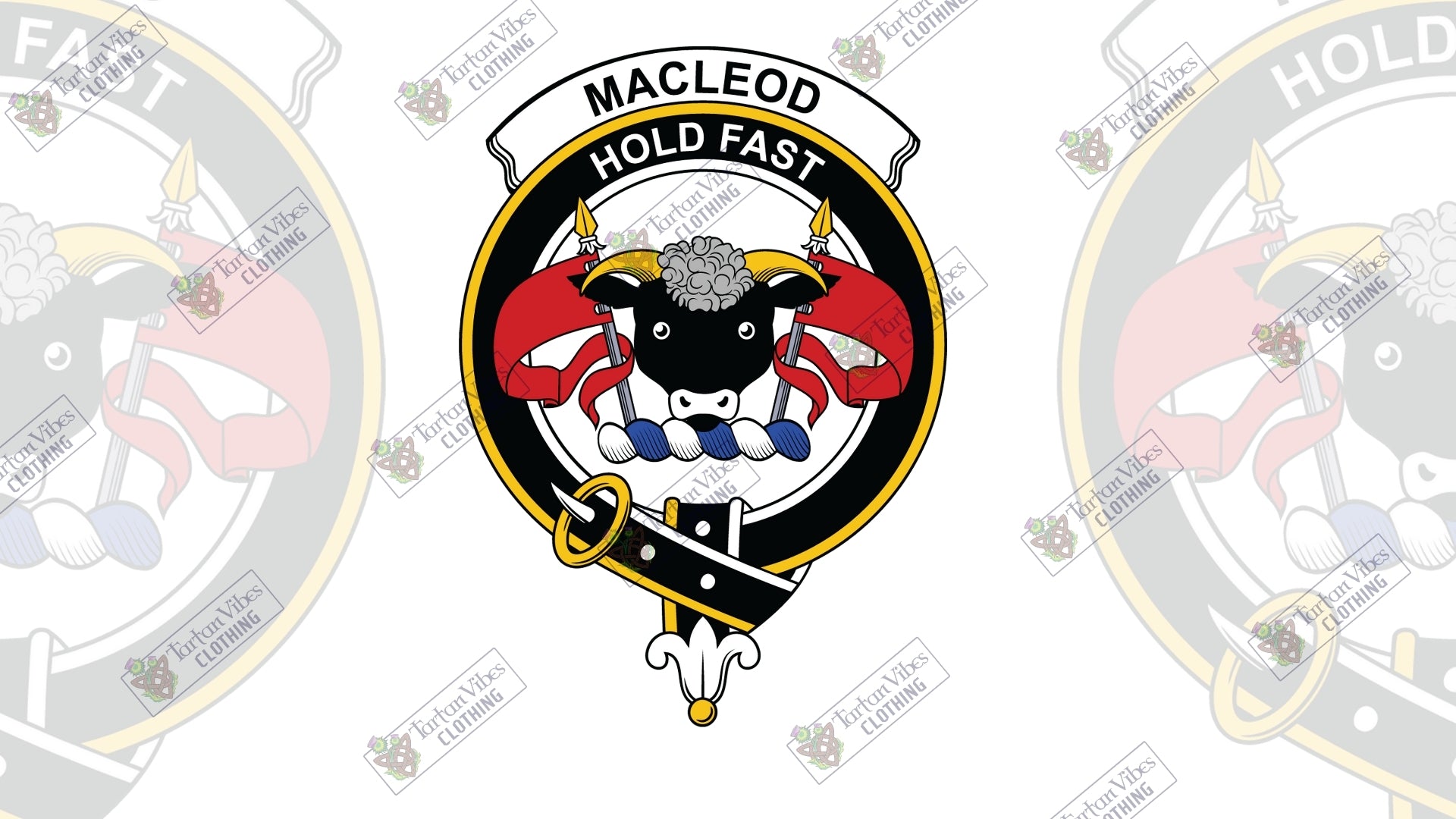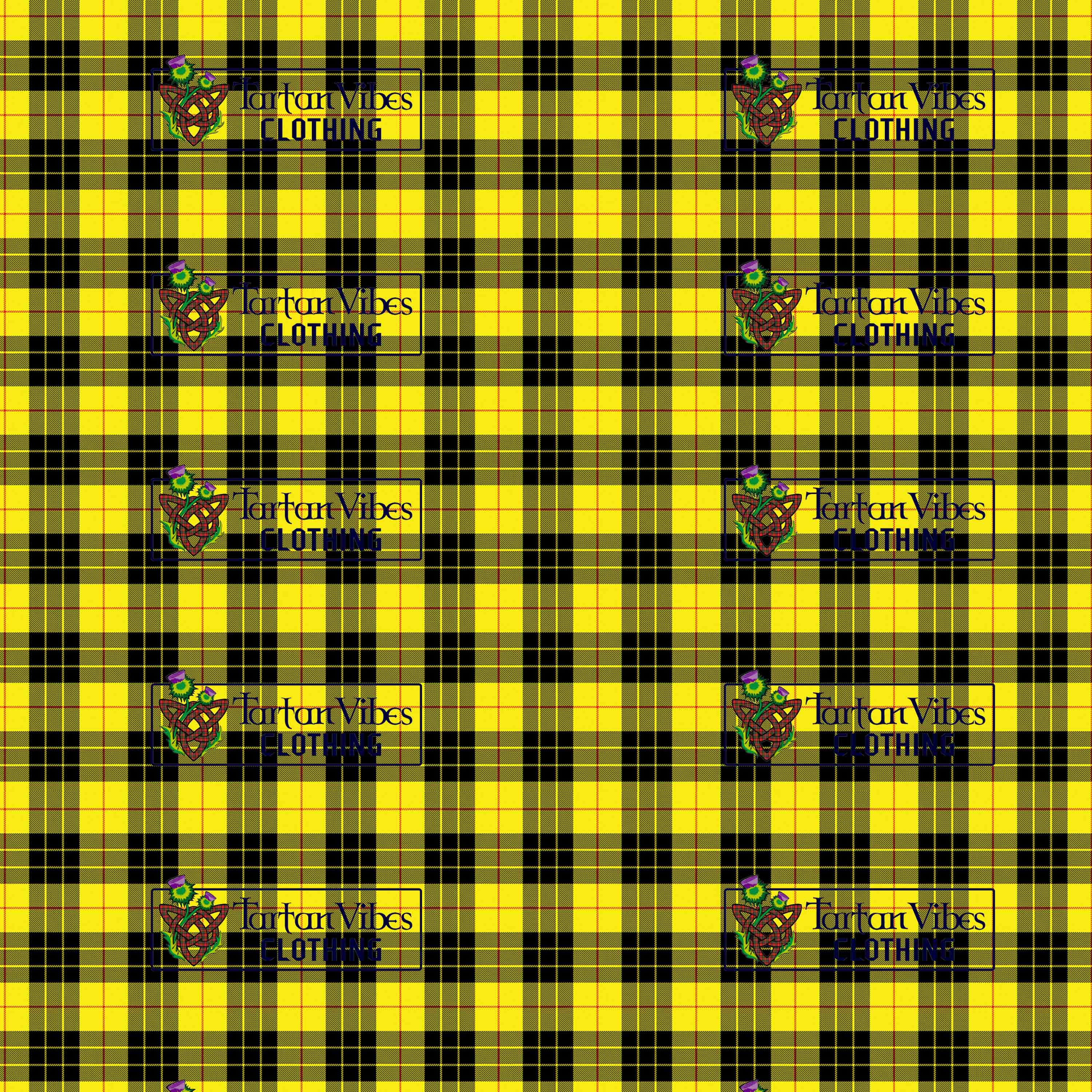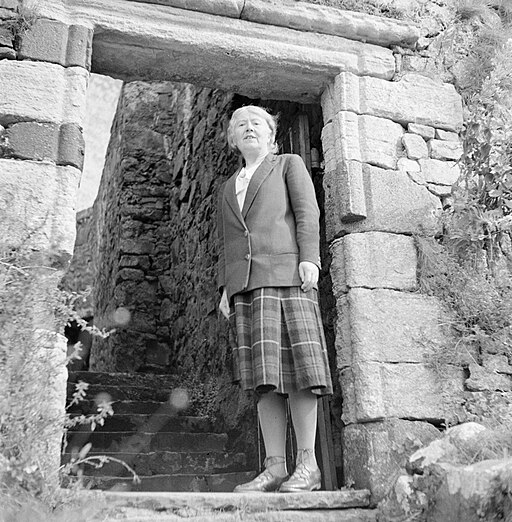Clan MacLeod: Unraveling the Tapestry of Scottish History
by Teejay Smith on Jan 27, 2024
Table of Content
Introduction
The MacLeod Clan is a proud Scottish Clan with a long and storied history. Nestled in the tapestry of Scottish history, Clan MacLeod stands as a testament to resilience, heritage, and a vibrant cultural legacy. From ancient origins to contemporary influence, the journey of Clan MacLeod is a captivating narrative that has woven itself into the fabric of Scotland's past and present.
Origins of Clan MacLeod
The MacLeod clan traces its roots back to the western coast of Scotland, particularly the Isle of Skye. For centuries, Skye has been their ancestral home, known for its stunning scenery and rugged charm. Dunvegan Castle, located on Skye, has served as the MacLeods' family seat for more than 800 years, reflecting their lasting significance and impact in the area.
In addition, the MacLeods formed branches and owned lands in other regions of Scotland, such as Harris, Lewis, and Raasay. These various branches, called septs, significantly contributed to broadening the MacLeod clan's influence and presence throughout the Scottish Highlands.
Clan Macleod Family Crest & Motto
The crest of Clan MacLeod is adorned with symbols that carry profound meanings. Unraveling the significance of these symbols provides insights into the ethos of the clan, complemented by a motto that echoes the principles they hold dear.
Gaelic Name: MacLeòid
MacLeod Clan Crest: A bull's head between two flags.
MacLeod Clan Motto: Hold Fast.
Badge: Juniper
Lands: Skye and Harris

In the 14th century, Malcolm MacLeod of Glen Elg faced a savage bull on his way home from a secret meeting. He killed it, using its horn to create a drinking cup named after Rory Mor, a famous MacLeod chief. Another MacLeod chief displayed bravery by saving a man from a bull in Inverary, leading to the incorporation of a bull's head crest and the motto "Hold Fast" into the MacLeods of Harris' armorial bearings. This crest was later memorialized in St Clement’s Church at Rodil, Harris. The black bull's head symbolizes ancient royalty and the defeat of enemies, with parallels to ancient Egyptian rituals.
History of Clan MacLeod
Olaf the Black was the Norse King of Man and the Isles who lived in the early 13th century. Leod was his younger son who, around 1220, married the daughter and heiress of MacRaild on Skye. She brought him Dunvegan Castle, and, when his father died, he inherited the islands of Lewis and Harris

The Clan MacLeod has weathered centuries of challenges, from times of abundance to scarcity, from conflicts with neighboring clans to sweeping social, political, and economic transformations in the Highlands and Islands. However, it wasn't until the last century that the dispersed clan members began to reunite under the leadership of their Chief, Dame Flora.
Source: Willem van de Poll, CC0, via Wikimedia Commons
She encouraged her fellow clanspeople to reestablish connections with their ancestral lands. This effort culminated in the inaugural Clan MacLeod Parliament in 1956, graced by the presence of Her Majesty the Queen. Since then, these clan gatherings have been a tradition at MacLeod Castle, drawing MacLeod descendants from across the globe every four years to commemorate their shared heritage.
The iconic Dunvegan Castle, situated on Skye, has been the ancestral seat of the MacLeods for over 800 years and stands as a testament to their enduring presence and influence in the region.
📝 Could your lineage be as fearless as theirs? Dive into the history of Clan MacLeod today
The Variations of MacLeod Tartans
The distinctive tartan patterns associated with Clan MacLeod Highlander have become iconic symbols. Exploring the origins, variations, and uses of the tartan provides a visual representation of the clan's identity.
Clan MacLeod of Harris Tartan
The MacLeod of Harris tartan is one of the most recognizable tartans associated with Clan MacLeod. Characterized by its bold blue and green colors, intersected by thin lines of white and black, the MacLeod Harris tartan holds a special place in the clan's history. It is often worn on ceremonial occasions and has become a symbol of pride for many MacLeod descendants.

Clan MacLeod of Lewis Tartan
The Clan MacLeod of Lewis Tartan is distinctive with its bold combination of yellow, black, and red. The pattern features broad yellow and black squares, intersected by fine red lines. This vibrant and eye-catching tartan is often referred to as the "Loud MacLeod" due to its striking appearance. It represents the heritage and identity of the MacLeod of Lewis clan, symbolizing their strong connection to their Scottish roots and the proud traditions of their ancestors.

MacLeod of Raasay Tartan
The MacLeod of Raasay Tartan is a more recent variation of the MacLeod tartan, created in the 19th century. It features softer colors, light blue and green, and thin red and yellow lines. This tartan is closely associated with the MacLeods of Raasay, a small island off the coast of Skye.

MacLeod of Skye Tartan
The MacLeod of Skye Tartan is a vibrant variation of the MacLeod tartan, featuring bright shades of blue and red with thin yellow lines. This tartan is associated with the MacLeods of Skye, who were known for their fierce defense of their ancestral home.

MacLeod of Californian Tartan
The MacLeod of Californian Tartan may seem like an odd addition to the list. Still, it is a testament to the widespread influence and legacy of the MacLeod family. The Scottish Tartans Authority created this tartan in the 1990s for the descendants of MacLeods who emigrated to California.

👉 Discover the rich history behind the MacLeod Family Tartan! Explore its deep roots in Scottish heritage and uncover the stories woven into every thread. Read more now!
Clan MacLeod's Castle & Territory

Clan MacLeod ruled the wild, mountainous, and exceptionally beautiful islands in the northwestern edge of Scotland, including Skye, Lewis, Harris, and Raasay. These rugged and picturesque islands served as the ancestral homeland of the clan, where they established their strongholds and exerted their influence over centuries.
Descended from seafaring Norse Kings, the MacLeods boast a rich clan history that stretches back over 800 years. Their connection to these islands runs deep, reflecting their seafaring heritage and resilience in navigating the challenges of their formidable surroundings. Today, these islands continue to bear the indelible imprint of Clan MacLeod, serving as a testament to their enduring legacy and the natural beauty of Scotland's landscape.
Castles that the Clan MacLeod has owned

Dunvegan Castle, located just a mile north of Dunvegan village on the Isle of Skye, has its origins in the fourteenth century and was initially built on an island. It serves as the home for the chief of Clan MacLeod. The castle features a large keep or tower, the renowned Fairy Tower, as well as a hall block and several later additions.
Knock Castle, also referred to as Caisteal Camus and Casteal Chamius, was owned by the MacLeods during the fifteenth century but eventually came under the control of the Clan MacDonald. In 1515, Alastair Crotach MacLeod attempted to reclaim the Lordship of the Isles by laying siege to the castle, but the effort was unsuccessful.
Dunscaith Castle, known as Dun Sgathaich, is situated near Armadale in Sleat on the Isle of Skye and is now in ruins on a coastal rock. Initially, it was held by the MacAskills, a branch of the MacLeods of Lewis, before being taken over by the MacLeods in the fourteenth century. The MacLeods successfully defended the castle against the MacDonald Lord of the Isles in 1395 and 1401, but it ultimately fell into the hands of the MacDonalds sometime in the fifteenth century.
What made Clan MacLeods stand out in history?
Clan MacLeods carved a distinctive legacy throughout the ages. Notably, their valor and guardianship of their territories earned them renown as formidable warriors. Their fearless prowess and martial expertise shaped pivotal moments in history, from pivotal roles in the Jacobite risings to conflicts with rival clans. This unwavering commitment to kin and land solidified their formidable reputation.
Yet, their influence extended far beyond the battlefield. Clan MacLeods left an indelible mark on culture and the arts, boasting a vibrant tradition of poetry, music, and storytelling. Among their treasured possessions is the legendary Fairy Flag, steeped in folklore and revered as a potent emblem of their ancestral heritage.
Famous MacLeods Throughout History
The clan boasts a lineage of remarkable individuals who have left an indelible mark on history. Their contributions, whether in the realms of politics, literature, or warfare, showcase the diversity of talents within Clan MacLeod.
Sir Rory Mor: Notable for his leadership in the Battle of Harlaw in 1411.
Norman MacLeod: Renowned minister of St. Columba Church in Glasgow, known for his influential sermons.
Iain Crichton Smith: Celebrated author and poet, capturing the essence of Scottish life in his works.
Martyn Bennett: Visionary composer and musician, blending traditional Scottish melodies with contemporary sounds.
Dr. Anne MacLeod: Pioneer in genetics, making significant contributions to the understanding of hereditary diseases.
Colin MacLeod: First Scottish cyclist to compete in the Tour de France, showcasing athletic prowess.
Clan MacLeod Today

While rooted in history, Clan MacLeod continues to evolve, adapting its traditions to the demands of the modern world. The dichotomy between preserving ancient customs and embracing contemporary lifestyles shapes the identity of the clan today.

👉 Explore the timeless traditions of Clan MacLeod through our collection of tartan products on our website. And bring a piece of the clan's history into your present.
Cultural Influence
The influence of Clan MacLeod extends beyond familial ties, seeping into the cultural tapestry of Scotland. Art, literature, and music bear the imprints of the clan, adding depth to the nation's artistic landscape.
Art: The renowned MacLeod artist, Margaret MacDonald, is celebrated for her contributions to the Glasgow Style movement, which significantly impacted the art world in the late 19th and early 20th centuries.
Literature: Sorley MacLean, a prominent MacLeod poet, is hailed as one of the greatest Scottish Gaelic poets of the 20th century, with his works exploring themes of identity, politics, and the natural world.
Music: Talented MacLeod musicians like Julie Fowlis have revitalized traditional Scottish music, bringing ancient Gaelic songs to new audiences and earning critical acclaim for their innovative interpretations.
Language: The MacLeod dialect, with its distinctive cadence and vocabulary, has influenced the broader Scottish linguistic landscape, preserving unique linguistic features that reflect the clan's heritage.
Festivals: The MacLeod Gathering, held every four years at Dunvegan Castle, is a vibrant celebration of clan heritage, featuring traditional music, Highland games, and gatherings of MacLeod descendants from around the world.
Cuisine: MacLeod culinary traditions, such as the preparation of traditional Highland dishes like cullen skink or stovies, have become integral to Scottish cuisine, preserving flavors and techniques passed down through generations.
Genealogy and Clan MacLeod
For many, tracing their roots within Clan MacLeod is a journey of self-discovery. Genealogical records serve as a roadmap, connecting individuals to their ancestral lines within the clan.
If you would like to find out more about the global branches of the Associated Clan MacLeod Societies, please visit: www.clanmacleod.org
Conclusion
In conclusion, Clan MacLeod's story is a captivating journey through time, rich with historical depth and cultural significance. From its mythical origins to the challenges faced today, the clan's legacy endures, weaving itself into the vibrant tapestry of Scottish history.
Clan MacLeod's customs and practices are steeped in tradition, offering a glimpse into a bygone era. From ceremonies to rituals, these traditions are the threads that bind the clan's past with its present.
Frequently Asked Questions
What is the difference between MacLeod and McLeod?
The names Macleod and McLeod may appear different, but in essence, they are one and the same. The Mc in McLeod is an abbreviation for Mac, derived from the Gaelic word for "son."
How can I trace my genealogy within Clan MacLeod?
Several resources, including genealogical databases and clan archives, can assist in tracing your lineage within Clan MacLeod.
What is the significance of Clan MacLeod's crest?
The crest of Clan MacLeod carries symbols representing the values and history of the clan, serving as a visual representation of its identity.
Are there modern events celebrating Clan MacLeod's heritage?
Yes, various events and festivals celebrate Clan MacLeod's heritage, providing opportunities for clan members and enthusiasts to come together.
Can I visit historical sites related to Clan MacLeod in Scotland?
Absolutely! There are numerous tourist attractions related to Clan MacLeod, offering a firsthand experience of its rich history.
How is Clan MacLeod involved in contemporary community activities?
Clan MacLeod is actively engaged in various community activities, contributing to local initiatives and preserving its cultural heritage.






